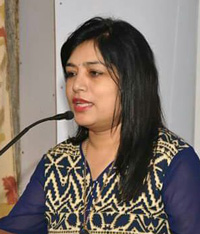What Size of Ovarian Cyst is Dangerous?

Quick Summary
Ovarian cysts are fluid-filled sacs that develop on or near the ovaries. While most ovarian cysts are harmless and resolve on their own, there are certain sizes that can pose a potential risk.
Here are three things you need to know about ovarian cysts' size:
- Most ovarian cysts are small and harmless.
- Large ovarian cysts can cause pain, pressure, and other symptoms.
- Very large ovarian cysts can rupture, which can be a medical emergency.
If you have any concerns about your ovarian cysts, be sure to talk to your doctor.
Table of Contents
- What is an Ovarian Cyst?
- Types of Ovarian Cysts
- Significance of Size: Ovarian Cyst
- Risks and Complications of Large Ovarian Cyst
- Signs and Symptoms of Dangerous/Large Cysts
- Diagnosing a Ovarian Cyst Size
- Prevention Measures to Manage Large Ovarian Cysts
- Treatment Options for Large Ovarian Cysts
- When to Consult a Doctor?
- Takeaway
- Frequently Asked Questions
- References
What size of ovarian cyst is dangerous?" It's a question that often arises when discussing ovarian cysts. While most ovarian cysts are harmless and resolve on their own, there are certain sizes that can pose a potential risk.
This blog will discuss everything you need to know about ovarian cysts' size - from the different types to their symptoms and treatment options. So keep reading!
Download our App today to plan your surgery seamlessly and stress-free!
What is an Ovarian Cyst?
Ovarian cysts are fluid-filled sacs or pockets that may develop on the surface or inside the ovaries in females. These cysts are prevalent, and many women will develop at least one during their lifetime.
Most cysts are benign, don't cause symptoms, and leave independently without treatment within a few months. However, larger cysts or those that cause the symptoms required immediate medical attention so that they can get appropriate treatment before the condition worsens.
Cysts may vary in size and can range from a few millimeters to several centimeters in diameter. They can be very small (pea-sized) to large (grapefruit-sized). But the question is what size of ovarian cyst is dangerous.


Types of Ovarian Cysts
What size of ovarian cyst is dangerous is a really common question asked by females with ovarian cysts.
Knowing the size is essential to know different types of ovarian cysts. There are generally two main types of ovarian cysts: functional and pathological.
- Functional Cysts: These are the most common type of ovarian cyst. They result from ovulation, which is the release of an egg from the ovary. These cysts can indicate that your ovaries are working as they ought to.
- Follicular Cyst: These types of functional cysts usually form when a follicle in the ovary grows abnormally, and fluid accumulates inside it, forming a sac or cyst.
These types of cysts usually are harmless and go away on their own within 8 to 10 weeks without any treatment. - Corpus Luteum Cyst: This is a type of functional ovarian cyst that can form during the ovulation cycle. It occurs when an egg is freed from the follicle, producing progesterone, which helps maintain a pregnancy.
The corpus luteum normally dissolves after ovulation or if conception does not occur.
- Follicular Cyst: These types of functional cysts usually form when a follicle in the ovary grows abnormally, and fluid accumulates inside it, forming a sac or cyst.
- Other Cysts (Pathological Cysts): Ovarian cysts do not always develop in response to your menstrual cycle. Although they don't usually indicate a sickness, your doctor may want to keep an eye on them to make sure issues don't arise. Other types of cysts include:
- Endometriomas: Also known as chocolate cysts, are a type of ovarian cyst that is caused by endometriosis.
The cysts form when the tissue from the uterus lining grows outside of it and attaches to organs in other parts of the body, such as on or near an ovary. Endometriomas can cause pain, infertility, and heavy menstrual bleeding. - Dermoid Cysts: These types of cysts are non-cancerous, slow-growing, and usually benign growths that can form in various human body areas.
They typically contain a combination of skin tissues such as sweat glands, hair follicles, and sebaceous (oil) glands. Dermoid cysts may occur anywhere on or near the skin surface but commonly appear on the face, neck, or scalp. - Cystadenomas: They are benign cystic tumours that most commonly occur in the ovaries but can also form in other body parts like the pancreas and liver.
They are typically filled with a watery fluid or gelatinous material and often contain solid components. Cystadenomas may cause pain if they enlarge and press on surrounding organs or tissues.
- Endometriomas: Also known as chocolate cysts, are a type of ovarian cyst that is caused by endometriosis.
Significance of Size: Ovarian Cyst
The ovarian cyst size plays a crucial role in determining the potential risks and complications associated with ovarian cysts. While most of the cysts are small and benign, larger cysts pose a potential danger to a woman’s health.
The size of ovarian cysts can vary greatly, varying from less than one centimetre to more than 10 centimetres. Small cysts, less than 3 centimetres, are usually considered normal and don't require any treatment.
They are commonly found during routine pelvic exams and may go away independently.
A cyst is considered dangerous when it grows larger than 5 centimetres (2 inches). This size is the threshold for a cyst to be considered complex, which can potentially become cancerous.
However, most ovarian cysts are not cancerous, and most women with ovarian cysts do not develop ovarian cancer.
However, any cyst that causes severe symptoms or continues to grow may need medical attention regardless of its size.
Risks and Complications of Large Ovarian Cyst
The size of an ovarian cyst does not always determine its potential risk. However, some larger cysts can be more concerning than smaller ones. The risks and complications associated with a large ovarian cyst size can include:
- Torsion: A large ovarian cyst can twist or "torsion," cutting off the blood supply to the ovary. This can cause severe pain, nausea, and vomiting and require emergency surgery.
- Rupture: Ovarian cysts that are larger rupture, causing sudden, severe pain and internal bleeding. This is a medical emergency and requires immediate treatment.
- Infertility: Ovarian cysts that are larger than normal cyst size can interfere with ovulation, leading to infertility.
- Compression: A large ovarian cyst can compress adjacent structures, such as the bladder or rectum, causing difficulty with urination or bowel movements.
- Psychological Effects: Women with large ovarian cysts may experience anxiety, depression, or other psychological effects due to the uncertainty and potential risks associated with the cyst.
- Cancer: In rare cases, a large ovarian cyst may be cancerous or have the potential to become cancerous.
Signs and Symptoms of Dangerous/Large Cysts
Knowing what size of ovarian cyst is dangerous is not enough; you need to know its symptoms to detect it early.
Dangerous or large cysts can cause several different symptoms, and it is essential to be aware of these so that you can seek medical help if necessary. Some of the most common signs and symptoms include:
- Abdominal pain or discomfort, particularly on one side
- Weight gain or bloating
- Pelvic pain
- Difficulty emptying your bladder or bowel
- Changes in your menstrual cycle
- Infertility
If you experience these symptoms, especially if they are severe or accompanied by other concerning symptoms like fever, vomiting, or fainting, it is essential to see a doctor right away.
They will likely order an ultrasound to check for ovarian cysts and determine whether or not they are dangerous.
Diagnosing a Ovarian Cyst Size
Healthcare experts use a variety of diagnostic procedures to determine an ovarian cyst size. Here are the diagnostic tests recommended by the doctors to diagnose ovarian cyst size:
- Ultrasound Imaging: The main technique for identifying and quantifying the size of ovarian cysts is ultrasound imaging.
- Images of the ovaries and cysts are produced using sound waves in this non-invasive method.
- Depending on the exact situation, an abdominal or transvaginal ultrasound may be carried out during an ultrasound.
- These imaging methods enable medical professionals to see the cyst's size, shape, location, and other details.
- Pelvic Examination: A pelvic examination might reveal important details regarding the existence and overall size of an ovarian cyst.
- A healthcare provider manually examines the pelvic region during this examination, to check for any anomalies, including cysts.
- A pelvic examination can provide an initial evaluation, although it might not be able to provide exact measures of the cyst's dimensions.
- Other Diagnostic Tests: In some circumstances, additional diagnostic tests may be required to fully assess the size and characteristics of the ovarian cyst.
- Computed tomography (CT) or magnetic resonance imaging (MRI) scans may be part of these examinations.
- These imaging methods can generate intricate cross-sectional images, enabling a more precise evaluation of the cyst's size and associated consequences.
Prevention Measures to Manage Large Ovarian Cysts
Large cysts can be scary and overwhelming when diagnosed. Fortunately, there are ways to manage the risk of developing large cysts through preventative measures. By following the below-mentioned measures, you can help reduce your chances of developing large ovarian cysts.
- Maintain A Healthy Weight: One important thing is maintaining a healthy weight. Being overweight or obese puts a woman at greater risk of developing ovarian cysts.
- Avoid Tobacco: Another vital prevention tip is to avoid using tobacco products. Smoking cigarettes increases the risk of developing ovarian cysts.
- Limit Alcohol: It is also essential to limit the amount of alcohol that you consume. Drinking too much alcohol may increase your risk of developing ovarian cysts.
- Stress Management: Stress is one of the leading risk factors for ovarian cysts. A woman should indulge in meditation, yoga, or other activities to help reduce stress.
- Family History: If your family has a history of ovarian cysts, you may be at increased risk of developing them. If this is the case, it is essential to talk to your doctor about steps that you can take to prevent them.
Sometimes, your doctor may recommend birth control pills to help prevent ovarian cysts.
The best way to prevent large or dangerous ovarian cysts is to live a healthy lifestyle and talk to your doctor if you have any concerns. Following these tips can minimise your risk and keep your ovaries healthy!
Treatment Options for Large Ovarian Cysts
Depending on the size and location of the cyst, this can be done with either traditional open surgery or minimally-invasive laparoscopic techniques.
In some cases, a catheter may be used to inject fluids into the cyst to shrink it to reduce its size before removal.
Additionally, antibiotics may be prescribed if an infection is present within the cyst.
If you find out what size of ovary cyst is dangerous and detect a larger than the normal cyst size, there are a bunch of treatment options that you can try:
- Watchful Waiting: This means monitoring the cyst with imaging (ultrasound, MRI, CT scan) every few months to see if it changes in size. Many times, cysts will go away on their own without any treatment.
- Medications: In cases where changing lifestyle is not enough, medications may be prescribed to manage symptoms or shrink the cyst.
- Birth control pills are prescribed to help regulate hormone levels, which can prevent the formation of new cysts.
- Nonsteroidal anti-inflammatory drugs (NSAIDs) can relieve pain and inflammation associated with ovarian cysts.
- Hormonal Therapy: This involves taking birth control pills or other hormones to shrink the size of the cyst.
It is often used for women who have large cysts that recur frequently. - Aspiration: This is a procedure where a needle is inserted into the cyst to remove some of the fluid. This can be done as an outpatient procedure under anaesthesia.
Aspiration can help decrease the size of the cyst and also can help with diagnosis if there is a concern for cancer. - Surgeries: In case, the ovarian cyst is not properly treated in above mentioned ways then, the doctor may recommend undergoing the following surgical procedures.
- Cystectomy: This is a surgical procedure in which the entire cyst is removed.
- This surgery may be necessary if the cyst is large or causing severe symptoms.
- This is typically performed if there is a strong suspicion of cancer or the cyst cannot be controlled with other measures.
- Laparotomy: In more severe cases, a laparotomy may be necessary, which involves making a larger incision in the abdomen to remove the cyst.
- Cystectomy: This is a surgical procedure in which the entire cyst is removed.
It is important to note that treatment options for ovarian cysts will vary depending on the size and type of cyst and the severity of symptoms.
Women who suspect they may have an ovarian cyst should speak with their healthcare provider to determine the best treatment for their needs.
When to Consult a Doctor?
When dealing with ovarian cysts, knowing when to seek medical attention is important. Here are some pointers to help you understand when you should see a doctor for large or dangerous cysts:
- If you experience severe or persistent pain in your abdomen or pelvis, especially if it is accompanied by nausea, vomiting, or fever.
- Having irregular menstrual periods or noticing abnormal bleeding, could indicate a cyst or other reproductive health issues.
- Have a family history of ovarian cancer or have previously been diagnosed with ovarian cysts.
- If you are pregnant and experience any symptoms of an ovarian cyst, such as pain or discomfort.
- Concerning the size or nature of an ovarian cyst, it's always a good idea to speak with your doctor. They can help you understand your risk factors and advise the best action based on your unique health needs.
Takeaway
In conclusion, understanding the ovarian cyst size that is considered dangerous is essential for helping women be aware of any potential health risks. While some ovarian cysts are ultimately harmless, they can signal an underlying condition or disease, so it's best to stay alert and seek professional medical advice when needed.
If a woman notices a cyst on her ovary, she should contact her doctor to get tested further and discuss the best treatment options if necessary.
If you are concerned about your ovarian cyst size and its severity, look no further than HexaHealth experts! Our network of specialists can provide the answers you need to feel more comfortable and secure in knowing what's going on with your health.
Let us connect you with these professionals so that they may resolve any doubts or worries. Get in touch with HexaHealth experts today and take control of your future health!
Suggested Reads
| Ovarian Cyst Surgery | Laparoscopic Ovarian Cystectomy |
| Ovarian Cancer Surgery |
Download our App today to plan your surgery seamlessly and stress-free!
Frequently Asked Questions
What is an ovarian cyst? How is it formed?
An ovarian cyst is a fluid-filled sac developing on or inside an ovary. These cysts may cause pain and other symptoms depending on the cyst's size and position. Various factors, including:
- Hormonal imbalances
- Endometriosis
- Pelvic infections can cause it.
Treatment typically includes:
- Medications
- Draining of the fluid in the cyst
- Surgical removal in more severe cases.
What are the types of ovarian cysts, and how do they differ in size and severity?
The four main types of ovarian cysts are:
- Functional cysts
- Endometriomas
- Dermoid cysts
- Polycystic ovaries
Functional cysts are usually small and usually go away without treatment. Endometriomas can range from a few millimeters to several centimeters in size and may cause pain or other symptoms.
Dermoid cysts contain tissue such as hair and skin glands and can be up to 10 cm in diameter. Polycystic ovaries have numerous small fluid-filled sacs, which often don't cause any symptoms but may lead to infertility.
How is the size of an ovarian cyst determined, and what is considered a large or small cyst?
The right ovarian cyst's normal size is typically determined by a physical exam or an imaging test.
A small cyst is considered to be less than 3 cm in diameter, while a large one has grown to more than 5 cm. Anything between those sizes is considered moderate.
What are the symptoms associated with ovarian cysts, and how are they related to the size of the cyst?
Common symptoms associated with ovarian cysts include:
- Pelvic pain
- Bloating
- Difficulty eating
Other signs may include:
- Nausea
- Vomiting
- Unusual vaginal bleeding
- Discharge
As the size of the cyst increases, it can lead to more severe symptoms such as:
- Anaemia
- Irregular menstrual cycles
- Infertility
How is the risk of complications associated with ovarian cysts affected by their size, and what are the potential complications?
The risk of complications associated with ovarian cysts increases as the cyst grows. Potential complications can include:
- Abdominal pain
- Irregular periods
- Infertility
In some cases, a large cyst may also increase the risk of developing cancerous cells in the ovary.
What tests are used to diagnose ovarian cysts, and how do they help determine the size and severity of the cyst?
Ultrasound imaging is the primary test used to diagnose ovarian cysts. Using sound waves to generate images of the ovaries, ultrasound can help determine the size and type of cyst present. Other diagnostic tests which may be used include:
- Blood test for CA-125
- Abdominal CT scan
- MRI scan
These tests can provide more detailed information about any potential complications or changes in the normal cyst size or severity of the cyst.
What size of ovarian cyst is dangerous in mm?
Ovarian cysts can range from as small as a pea to larger than an orange. Generally, cysts less than 5 cm (about 2 inches) in diameter are considered normal and do not generally require treatment.
However, suppose the cyst grows larger than 5 cm. In that case, it is more likely to be cancerous or cause other serious health issues and should be evaluated by a doctor for further assessment and possible treatment.
How is the treatment for ovarian cysts affected by their size, and what are the different treatment options?
Treatment for ovarian cysts depends on the ovarian cyst size and other factors such as type and symptoms. Smaller cysts, usually less than 5cm in diameter, may not need treatment and can be monitored with ultrasounds.
Larger cysts should be surgically eliminated or drained if they cause pain or discomfort. Medication might also be prescribed to reduce inflammation and shrink the size of the cyst, depending on its type.
What risk factors are associated with large ovarian cysts, and how can they be managed?
Large ovarian cysts can be associated with an increased risk of developing ovarian torsion, rupture, or malignancy. Risk factors include age, family history, and fertility treatment.
They can be managed through regular monitoring via scans, blood tests, and lifestyle changes such as diet or exercise. Surgery may also be necessary in some cases.
How does the patient's age affect the risk associated with ovarian cysts, and how does it impact the treatment approach?
Patients over the age of 50 are at greater risk for ovarian cysts. This is due to decreased hormones associated with menopause, which can cause fluid-filled sacs to develop on the ovary.
Treatment approaches often involve hormone therapy or surgery, depending on the size and type of cyst. Women over 50 may require more frequent monitoring and might be offered different treatment options than younger women.
What are the chances of ovarian cysts turning cancerous, and how is the size of the cyst related to this risk?
The chance of ovarian cysts turning cancerous is small, approximately 1-2%. The size of the cyst can be associated with an increased risk, very large cysts (greater than 10cm) have a higher potential to become malignant.
Women need to receive regular checkups, especially if they experience any symptoms related to ovarian cysts.
What lifestyle changes can be made to reduce the risk associated with ovarian cysts, irrespective of their size?
It is important to maintain a healthy lifestyle to reduce the risk associated with ovarian cysts.
- Eat a well-balanced diet rich in fruits, veggies, and whole grains
- Exercise regularly
- Manage stress levels through yoga or meditation
- Get regular checkups from your doctor
- Avoid smoking and excessive alcohol consumption
- Practice safe sex to reduce the risk of sexually transmitted diseases which can increase the chances of developing ovarian cysts.
How frequently should a person undergo imaging tests to monitor the size and growth of ovarian cysts, and what circumstances require immediate medical attention?
It is recommended that a person undergo imaging tests (e.g. ultrasound) every 2-4 months to monitor the size and growth of ovarian cysts. Immediate medical attention should be sought if symptoms worsen or new symptoms arise, such as:
- Abdominal pain
- Vomiting
- Fever
- If a cyst is larger than 5 cm
- If multiple cysts are present.
What are the different surgical options available for removing ovarian cysts, and how are they decided based on the size and severity of the cyst?
The main surgical options for ovarian cysts are laparoscopic cystectomy, salpingo-oophorectomy, and hysterectomy. The size and severity of the cysts will determine which procedure is best.
Laparoscopy may remove smaller or less severe cysts, while a more invasive procedure such as a hysterectomy may be needed for more extensive or complex cysts.
What post-surgical complications are associated with removing large ovarian cysts, and how can they be managed?
Post-surgical complications associated with removing large ovarian cysts can include:
- Infection
- Bleeding
- Damage to surrounding organs
To manage these potential complications, doctors may prescribe antibiotics or other medications. Additionally, close monitoring of the patient's recovery is important to address any post-surgery issues promptly.
How to prevent the formation of ovarian cysts, and what should be done to minimise their size and severity?
Maintaining a healthy lifestyle is vital to prevent ovarian cysts' formation. Eating a balanced diet with plenty of fruits and vegetables, regular exercise, and avoiding smoking can help minimise the risk of developing ovarian cysts.
Additionally, hormone therapy or birth control pills may reduce their size and severity. If symptoms are present or an ovarian cyst persists for over two menstrual cycles, consult your doctor to discuss potential treatments.
Is the cyst in the uterus size the same as the cyst in the ovary?
No, the cyst in uterus size and the ovary cyst size are two different cysts. Cysts that form on or inside the uterus are typically filled with fluid and may be referred to as uterine fibroids or endometrial polyps.
In contrast, ovarian cysts contain either liquid or semi-solid material. The size of these two types of cysts can vary significantly depending on an individual's medical history and condition.
References
All the articles on HexaHealth are supported by verified medically-recognized sources such as; peer-reviewed academic research papers, research institutions, and medical journals. Our medical reviewers also check references of the articles to prioritize accuracy and relevance. Refer to our detailed editorial policy for more information.
- Ovarian Cyst Size: Types, What’s Normal, When is Surgery Needed? [Internet]. Healthline. 2020.

- Cleveland Clinic. Ovarian Cysts: Management & Treatment, Symptoms, Diagnosis [Internet]. Cleveland Clinic. 2022.

- 3.NHS Choices. Treatment-Ovarian cyst [Internet]. 2019.

- NHS Choices. Treatment - Ovarian cyst [Internet]. 2019.

Last Updated on: 9 September 2024
Author
HexaHealth Care Team
HexaHealth Care Team brings you medical content covering many important conditions, procedures falling under different medical specialities. The content published is thoroughly reviewed by our panel of qualified doctors for its accuracy and relevance.
Expert Doctors (10)
NABH Accredited Hospitals (5)
Latest Health Articles
Related Treatments



















 Open In App
Open In App